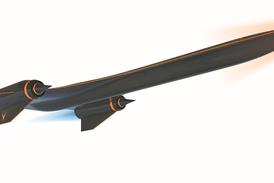The debate over the short-haul low-cost model being transferred to longer routes is not whether it will arrive, as it is already around in various guises, but whether existing carriers will adapt their business models to move in this direction.
If someone could only answer the question of how to make the low-cost model work on long-haul then there would indeed be a glittering prize awaiting them. But could the fact that nobody has yet unearthed this holy grail be because they are looking in the wrong place? The classic image is of an aggressive, new entrant in the mould of a Southwest, JetBlue, easyJet or Ryanair, shaking up the market. In fact, it may well prove to be the established players themselves who will end up applying the hard low-fares lessons learned in their short-haul business to the longer haul.
The debate was a live theme at the Future of Air Travel Conference, hosted by Airline Business last month at London's World Travel Market. The consensus is that a string of new hopefuls will indeed continue to try to crack the low-cost code on long-haul markets. They will not be the first. Freddie Laker's Skytrain got there first in 1977 with London-New York roundtrip fares at a fraction of the prevailing price. The venture was simply priced out of the market by the incumbents, albeit illegally as a court later ruled.
Others have nevertheless followed. Mark Darby, a Unisys Consulting partner and former Laker employee, points to echoes of the low-cost philosophy in the shape of new hopefuls such as Canadian start-up Zoom. Now seven months old, it offers low-fare, scheduled service from Canada to the UK starting at under $170 each way. Darby also points to Austria's Lauda Air and leisure operator Thomson. However, the fact remains that no-one to date has yet found a way to emulate the low-cost success story across the Atlantic. Notably the low-fares heroes themselves have not attempted it, although JetBlue has stretched the model with transcontinental US flights.
They have avoided the long-haul for good reason. The advantages that they have over network majors on the short-haul tend not to count over longer distances. Darby reckons that the only area where there is a clear advantage is in lower headquarters costs, that represent a meagre 10% of total expenses.
The biggest advantages that low-cost carriers have been able to exploit on short-haul markets is arguably their high aircraft utilisation, high density seating and high load factors. Yet on the long haul, the network majors are already pushing the envelope. So are their counterparts among the leisure airlines. All are routinely offering punishingly low fares that would be hard for even the slickest new entrant to match.
As yet, the majors can also still rely on business class to help subsidise the economy cabin in a way that low-fares carriers could not. Tim Jeans, managing director of UK leisure airline Monarch Scheduled, says that he must have looked at a dozen business plans for low-cost long-haul start-ups and "not one has been able to work unless it offers a premium class".
It is true that a new breed of high-capacity airliners could yet bring a step change in fares. Tim Clark, president of Emirates Airlines makes a plausible case for an Airbus A380 in all-economy configuration of 720-seats breaking even at 80% loads charging only $500 return on a routing such as London Stansted to Adelaide via Colombo. "I suggest we would enter a new dimension of long-haul travel," he says.
Darby has also done some of the sums for a start-up long-haul low-cost operator. These showed that to make it work, a carrier flying a daily, one-class high density configuration Boeing 767-300ER from London Stansted to Boston would need a year-round average one-way fare of just over $200. The average load factor would have to be 65%, growing to 80%, and there should be a revenue contribution from cargo and on-board sales. But many carriers already offer fares at similar or lower levels, and as Laker found out, their response to new competition would probably be fast and aggressive.
However, witness another experiment taking place on the transatlantic. Aer Lingus, having learned to operate in a low-fares environment in Europe, is now taking that lesson onto the Atlantic. The Irish carrier is already transferring its low-cost one-way fares strategy to its US services, cutting business class fares by 40% and economy fares by 20-30%. "We are not doing this in the face of pricing competition - it is a proactive step," says chief executive Willie Walsh.
There may indeed be a few brave financial backers willing to bet on starting up a long-haul low-cost player, but they will require deep pockets and not a little luck to take their dreams into reality. A more sustainable future could see the incumbents, or at least those who aim to survive, adapting their fares structures on the long haul just as some are already doing on the short haul:lifting restrictions and offering everyday low prices. That may seem less exciting than a wave of new entrants but its impact on the market would be no less dramatic.
Source: Airline Business























